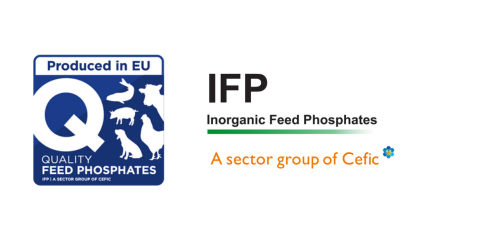An accurate calculation of phosphorus allowances to closely match animals’ particular nutritional requirements is vital from both a nutritional and an environmental standpoint. In order to enable feed compounders to make this calculation, the chemical composition of the feed phosphate and its purity must be assured.
However, not all products on the market today are of a known chemical composition or of sufficient quality to guarantee a regular supply of digestible phosphorus. Furthermore, these products have often been found to contain high levels of impurities, which can be harmful to the animal.
Investments in state-of-the-art production processes by members of CEFIC’s Inorganic Feed Phosphates Sector Group enable them to manufacture products in Europe that are entirely predictable in their phosphorus content and digestibility, as well as in their purity. These phosphates are sold with the Quality Feed Phosphates® symbol.
|
Feed phosphate solubility |
|||
|
Solubility of P |
|||
|
Total P content (%) |
in citric acid |
in ammonium citrate |
|
|
Monosodium phosphate |
20-24 |
• |
• |
|
Disodium phosphate |
9 |
• |
• |
|
Monoammonium phosphate |
27 |
• |
• |
|
Monocalcium phosphate |
22.7 |
• |
• |
|
Na Ca Mg phosphate |
17 |
• |
• |
|
Monodicalcium phosphate |
21 |
• |
• |
|
Dicalcium phosphate |
17-21 |
• |
• |
|
Defluorinated phosphate |
18 |
• |
o |
|
Tricalcium phosphate |
20 |
o |
o |
|
Natural tricalcium phosphate |
14 |
o |
o |
|
Calcium metaphosphate |
20 |
o |
o |
|
Calcium pyrophosphate |
24 |
o |
o |
|
• > 95% solubility - o < 95% solubility |
|||
Methods of analysis
Quality feed phosphates are regularly analysed using standardised laboratory methods to determine their phosphorus and calcium content, their solubility in citric acid and in ammonium citrate (which should be above 95%), and impurities such as arsenic, cadmium, lead, fluorine and mercury. The test methods are given here.
Products carrying the Quality Feed Phosphates® symbol are guaranteed to be of a high quality and nutritional value and meet all EU regulations regarding impurities. The continuing right to use the symbol is backed by a random sampling and testing procedure that ensures that the feed phosphates comply with the relevant standards.
The table above gives an analysis from several independent laboratories of the phosphorus content and the relative solubility of some typical feed phosphates. All the samples were analysed according to the same methodology and the results show the differences between mono and dicalcium phosphate and the tricalcium form.
